Experimental Study on Tensile Properties of a Novel Porous Metal Fiber/Powder Sintered Composite Sheet
Abstract
:1. Introduction
2. Results
2.1. Structure Characterization of the PMFPSCS
2.2. Uniaxial Tensile Behavior of the PMFPSCS
2.3. Effect of the Structural Parameters on the Tensile Properties of the PMFPSCS
2.4. Effect of the Sintering Parameters on the Tensile Properties of the PMFPSCS
3. Discussion
3.1. Deformation and Failure Mechanism of the PMFPSCS
3.2. Tensile Properties of the PMFPSCS
4. Experimental Procedures
4.1. Preparation of the PMFPSCS
4.2. Uniaxial Tensile Test of the PMFPSCS
5. Conclusions
Acknowledgments
Author Contributions
Conflicts of Interest
References
- Zhang, B.; Chen, T.N. Calculation of sound absorption characteristics of porous sintered fiber metal. Appl. Acoust. 2009, 70, 337–346. [Google Scholar]
- Tan, J.C.; Clyne, T.W. Ferrous fibre network materials for jet noise reduction in aeroengines Part II: Thermo-mechanical stability. Adv. Eng. Mater. 2008, 10, 201–209. [Google Scholar] [CrossRef]
- Reichelt, E.; Heddrich, M.P.; Jahn, M.; Michaelis, A. Fiber based structured materials for catalytic applications. Appl. Catal. A Gen. 2014, 476, 78–90. [Google Scholar] [CrossRef]
- Yi, P.Y.; Peng, L.F.; Lai, X.M.; Li, M.T.; Ni, J. Investigation of sintered stainless steel fiber felt as gas diffusion layer in proton exchange membrane fuel cells. Int. J. Hydrog. Energy 2012, 37, 11334–11344. [Google Scholar] [CrossRef]
- Xi, Z.P.; Zhu, J.L.; Tang, H.P.; Ao, Q.B.; Zhi, H.; Wang, J.Y.; Li, C. Progress of application researches of porous fiber metals. Materials 2011, 4, 816–824. [Google Scholar] [CrossRef]
- Banhart, J. Manufacture, characterisation and application of cellular metals and metal foams. Prog. Mater. Sci. 2001, 46, 559–632. [Google Scholar] [CrossRef]
- Malheiro, V.N.; Skepper, J.N.; Brooks, R.A.; Markaki, A.E. In vitro osteoblast response to ferritic stainless steel fiber networks for magneto-active layers on implants. J. Biomed. Mater. Res. A 2013, 101, 1588–1598. [Google Scholar] [CrossRef] [PubMed]
- Tang, H.P.; Zhang, Z.D. Developmental states of porous metal materials. Rare Met. Mater. Eng. 1997, 26, 1–6. [Google Scholar]
- Zhou, W.; Tang, Y.; Pan, M.P.; Wei, X.L.; Xiang, J.H. Experimental investigation on uniaxial tensile properties of high-porosity metal fiber sintered sheet. Mater. Sci. Eng. A Struct. 2009, 525, 133–137. [Google Scholar] [CrossRef]
- García-Moreno, F. Commercial applications of metal foams: Their properties and production. Materials 2016, 9, 85–127. [Google Scholar] [CrossRef]
- Liu, P.; He, G.; Wu, L.H. Uniaxial tensile stress-strain behavior of entangled steel wire material. Mater. Sci. Eng. A Struct. 2009, 509, 69–75. [Google Scholar] [CrossRef]
- Jiang, G.F.; Li, Q.Y.; Wang, C.L. Fabrication of graded porous titanium-magnesium composite for load-bearing biomedical applications. Mater. Des. 2015, 67, 354–359. [Google Scholar] [CrossRef]
- Ma, C.Y.; Ding, W.F.; Xu, J.H.; Fu, Y.C. Influence of alumina bubble particles on microstructure and mechanical strength in porous Cu-Sn-Ti metals. Mater. Des. 2015, 65, 50–56. [Google Scholar] [CrossRef]
- Cay, H.; Xu, H.R.; Li, Q.Z. Mechanical behavior of porous magnesium/alumina composites with high strength and low density. Mater. Sci. Eng. A Struct. 2013, 574, 137–142. [Google Scholar] [CrossRef]
- Rabiei, A.; O’Neill, A.T. A study on processing of a composite metal foam via casting. Mater. Sci. Eng. A Struct. 2005, 404, 159–164. [Google Scholar] [CrossRef]
- Vendra, L.; Rabiei, A. Evaluation of modulus of elasticity of composite metal foams by experimental and numerical techniques. Mater. Sci. Eng. A Struct. 2010, 527, 1784–1790. [Google Scholar] [CrossRef]
- Vendra, L.J.; Rabiei, A. A study on aluminum-steel composite metal foam processed by casting. Mater. Sci. Eng. A Struct. 2007, 465, 59–67. [Google Scholar] [CrossRef]
- Rabiei, A.; Vendra, L.J. A comparison of composite metal foam’s properties and other comparable metal foams. Mater. Lett. 2009, 63, 533–536. [Google Scholar] [CrossRef]
- Tang, Y.; Zhou, R.; Li, H.; Yuan, W.; Lu, L.S. Experimental study on the tensile strength of a sintered porous metal composite. Mater. Sci. Eng. A Struct. 2014, 607, 536–541. [Google Scholar] [CrossRef]
- Ackermann, S.; Scheffe, J.R.; Duss, J.; Steinfeld, A. Morphological characterization and effective thermal conductivity of dual-scale reticulated porous structures. Materials 2014, 7, 7173–7195. [Google Scholar] [CrossRef]
- Fang, C.B.; Wan, Z.P.; Liu, B.; Lu, L.S. A novel sintered stainless steel fiber felt with rough surface morphologies. Adv. Mater. Sci. Eng. 2014, 2014, 1–7. [Google Scholar] [CrossRef]
- Wu, F.; Zhou, Z.Y.; Duan, L.Y.; Xiao, Z.Y. Processing, structural characterization and comparative studies on uniaxial tensile properties of a new type of porous twisted wire material. Materials 2015, 8, 5606–5620. [Google Scholar] [CrossRef]
- Wan, Z.P.; Tang, Y.; Liu, Y.J.; Liu, W.Y. High efficient production of slim long metal fibers using bifurcating chip cutting. J. Mater. Process. Technol. 2007, 189, 273–278. [Google Scholar] [CrossRef]

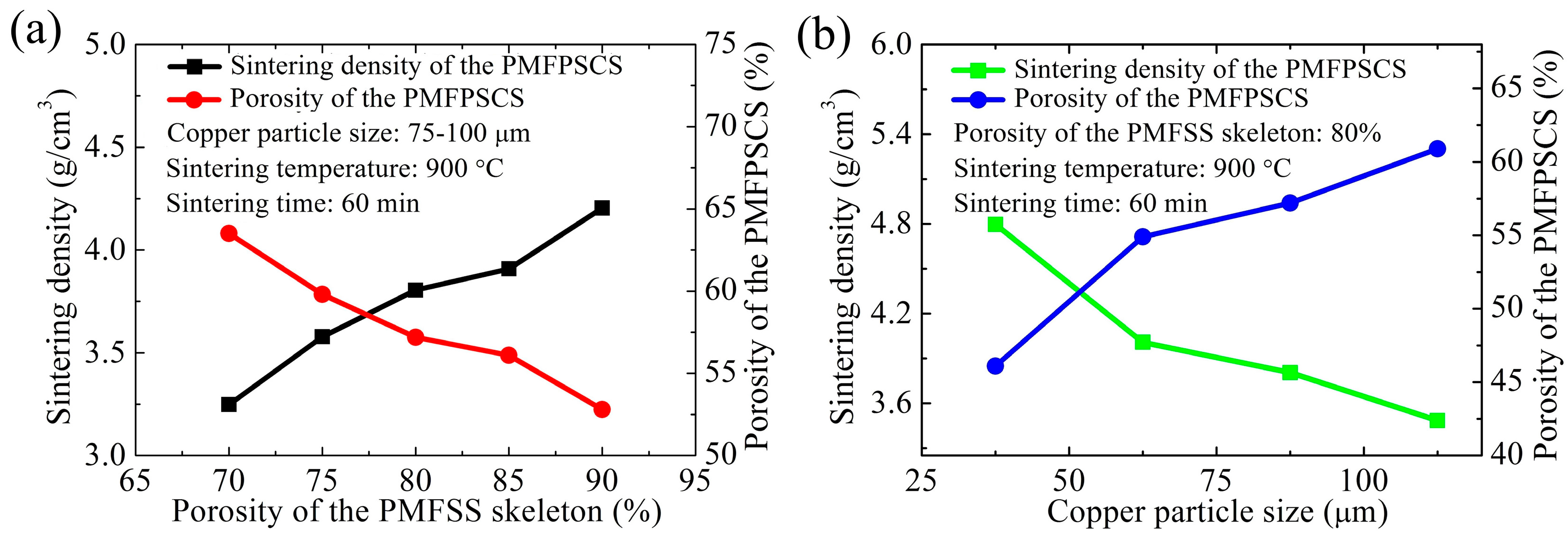

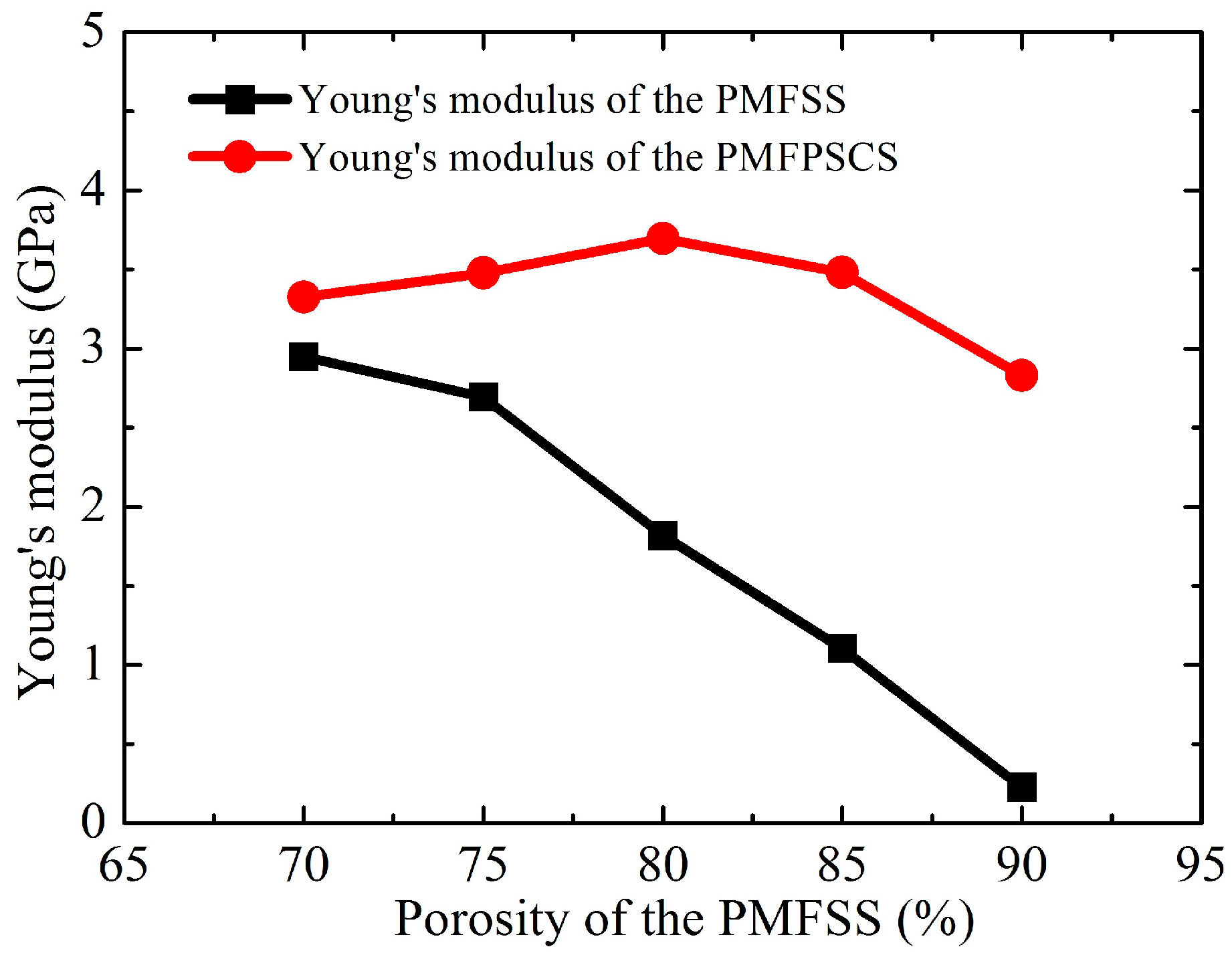

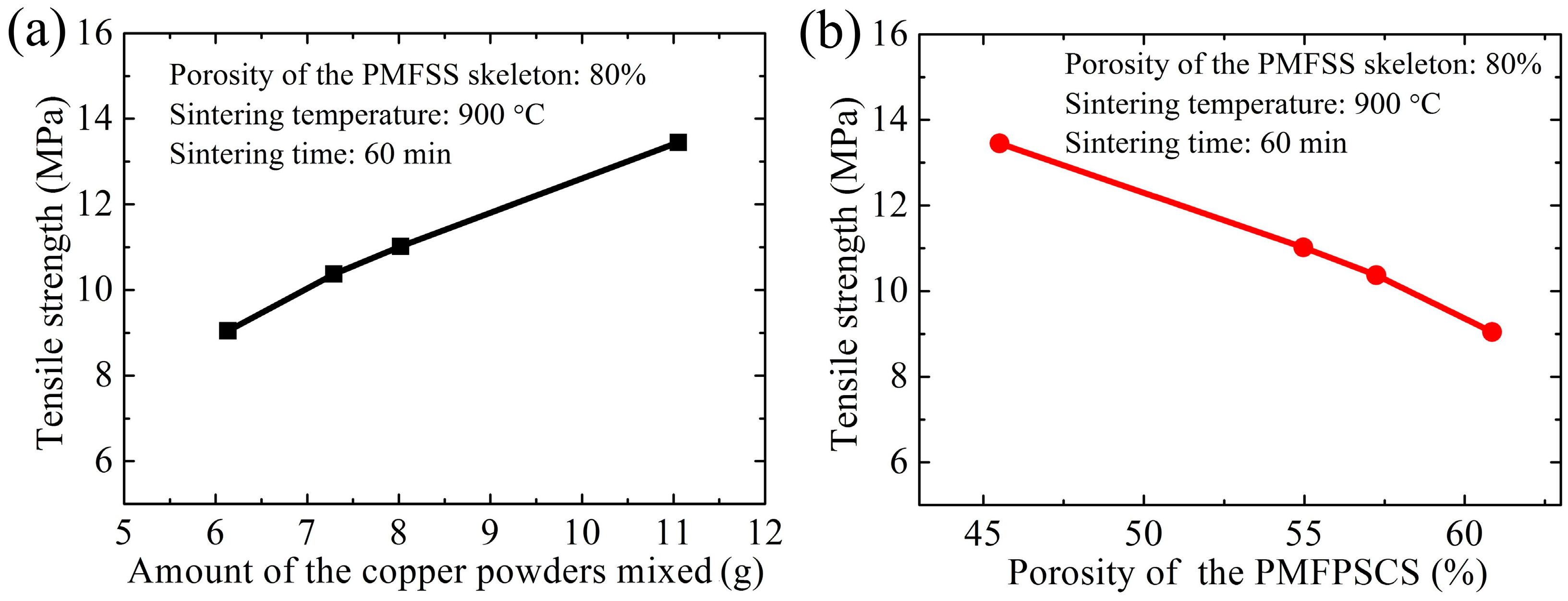
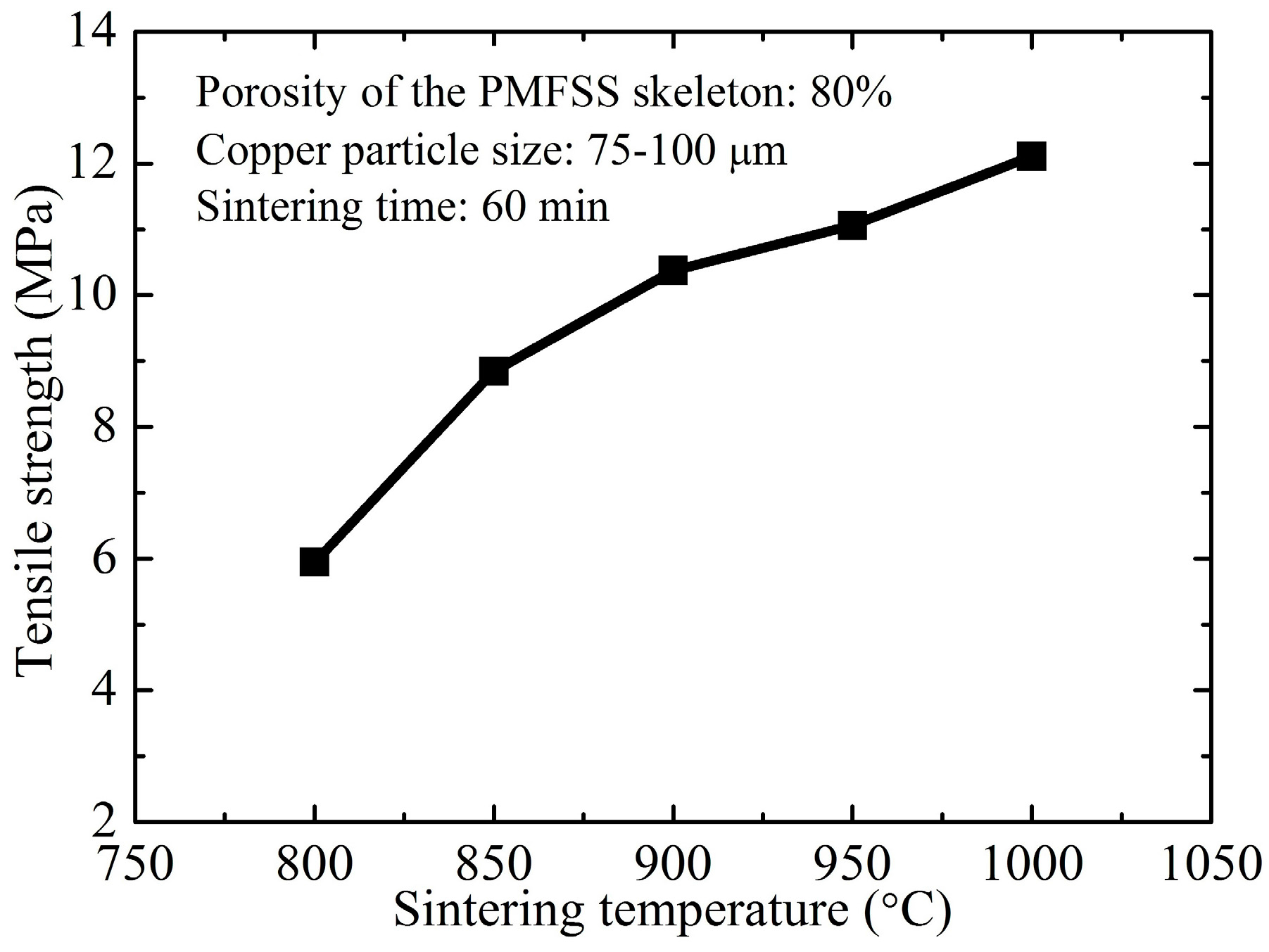

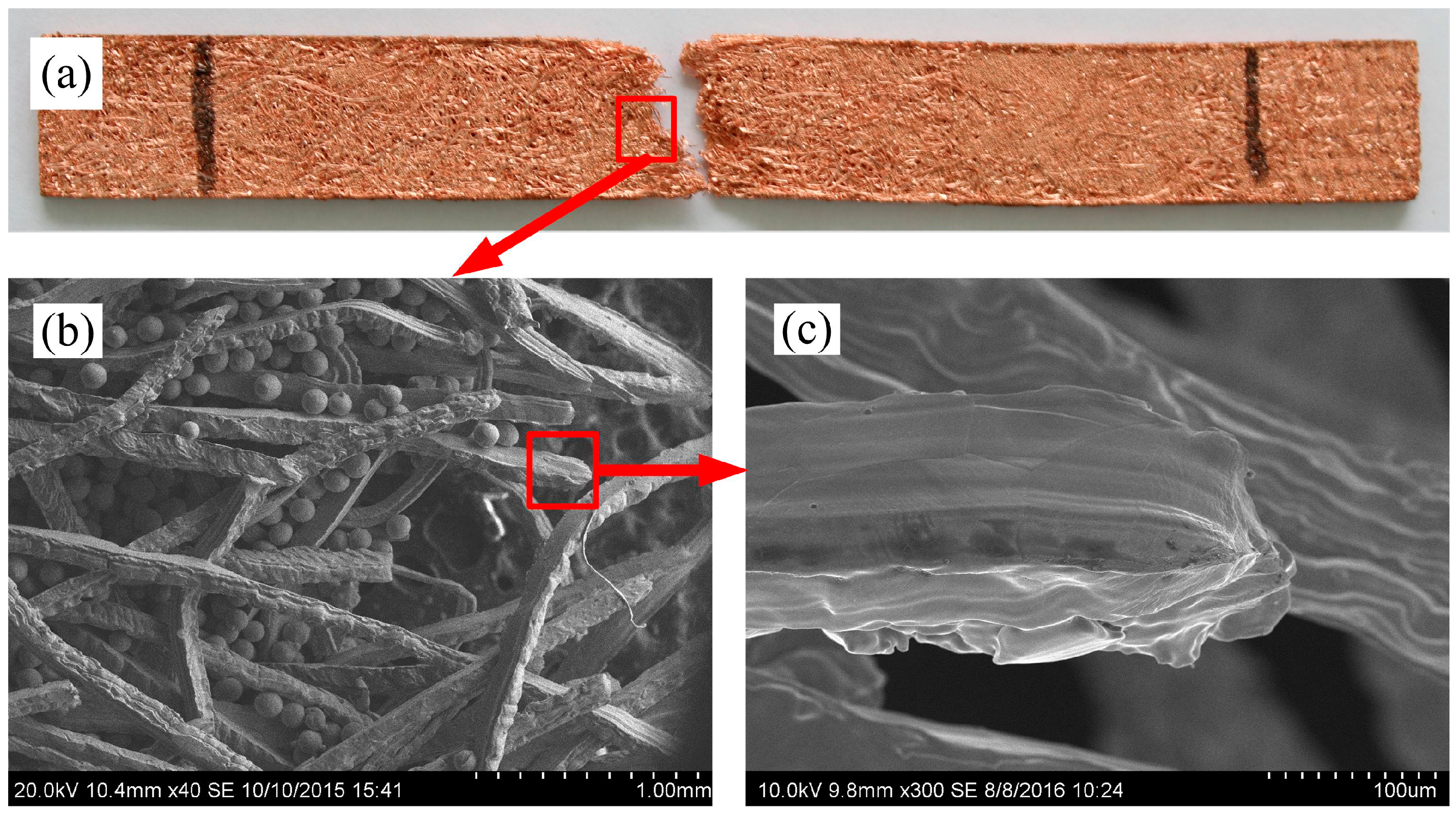
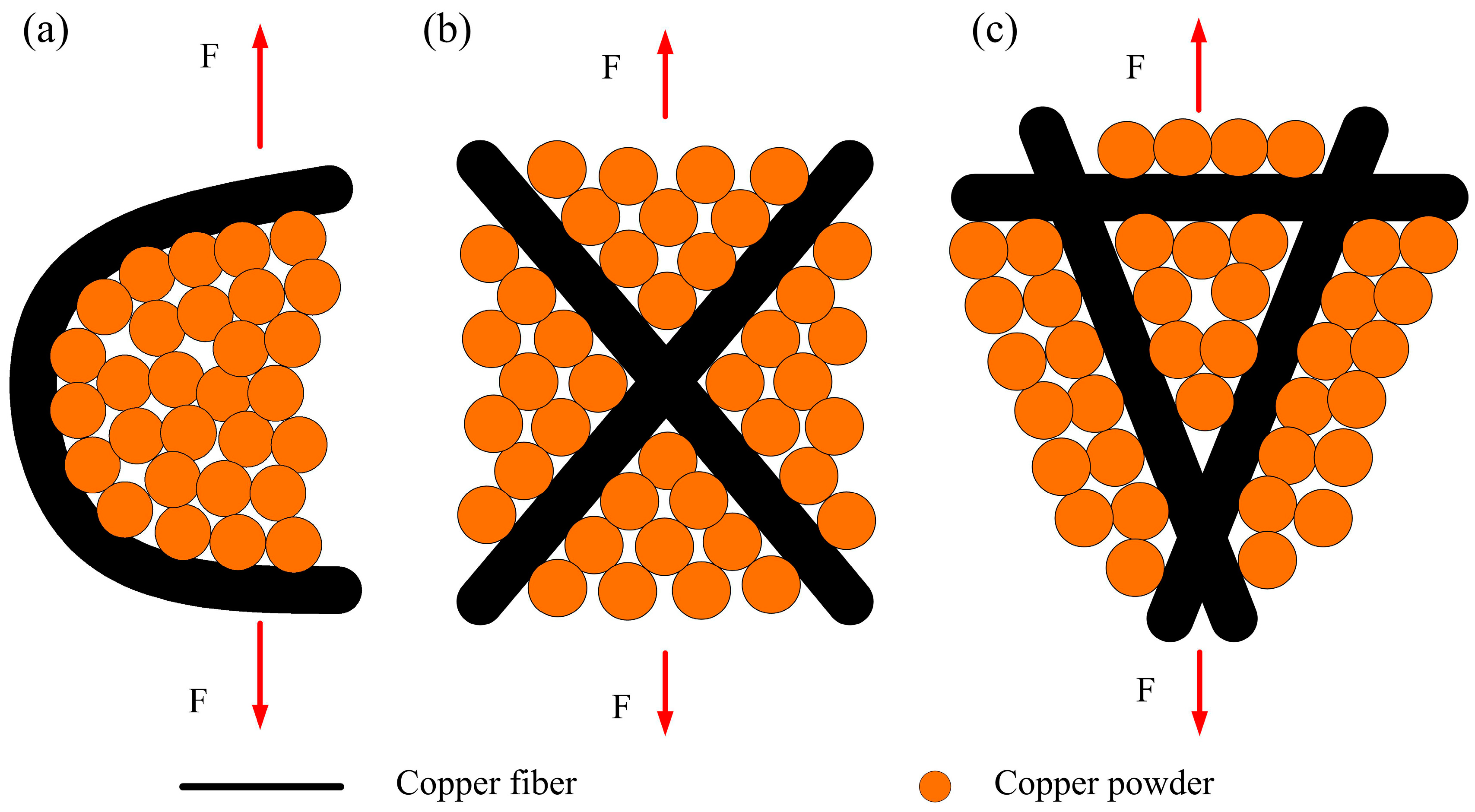

© 2016 by the authors; licensee MDPI, Basel, Switzerland. This article is an open access article distributed under the terms and conditions of the Creative Commons Attribution (CC-BY) license (http://creativecommons.org/licenses/by/4.0/).
Share and Cite
Zou, S.; Wan, Z.; Lu, L.; Tang, Y. Experimental Study on Tensile Properties of a Novel Porous Metal Fiber/Powder Sintered Composite Sheet. Materials 2016, 9, 712. https://doi.org/10.3390/ma9090712
Zou S, Wan Z, Lu L, Tang Y. Experimental Study on Tensile Properties of a Novel Porous Metal Fiber/Powder Sintered Composite Sheet. Materials. 2016; 9(9):712. https://doi.org/10.3390/ma9090712
Chicago/Turabian StyleZou, Shuiping, Zhenping Wan, Longsheng Lu, and Yong Tang. 2016. "Experimental Study on Tensile Properties of a Novel Porous Metal Fiber/Powder Sintered Composite Sheet" Materials 9, no. 9: 712. https://doi.org/10.3390/ma9090712





